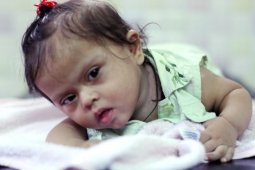Categories
- Bariatric Surgery (11)
- Black Fungus (5)
- Bone Marrow transplant (3)
- Brain Tumor Surgery Navigation Technology (20)
- Cardiac Surgery (66)
- Cardiology (97)
- Computer navigation technology for joint replacements (20)
- Covid Vaccination (17)
- Critical Care (2)
- Dental (19)
- Dermatology (31)
- Dialysis Support Group - “UTSAAH” (11)
- Dietitian (33)
- Emergency Medicine (4)
- Emotional Health (11)
- Endocrinology (33)
- ENT (20)
- Gastroenterology and GI Surgery (53)
- General and Laparoscopic Surgery (21)
- General Surgery (4)
- Gynecology & Obstetrics (183)
- Hematology (20)
- Internal Medicine (294)
- Kidney Transplant (50)
- Kidney Transplantation (20)
- Lung Cancer (8)
- Minimal Invasive Surgery (1)
- Mother & Child (20)
- mucormycosis (5)
- Nephrology (61)
- Neurology (147)
- Neurosurgery (68)
- Nutrition and Dietetics (107)
- Omicron Variant (1)
- Oncology (288)
- Ophthalmology (10)
- Orthopaedics & Joint Replacement (86)
- Paediatrics (59)
- Pediatric Nephrology (3)
- Physiotherapy (5)
- Plastic & Reconstructive Surgery (6)
- Psychiatry and Psychology (90)
- Psychologist (28)
- Pulmonology (72)
- Rheumatology (13)
- Spine Services (21)
- Transradial Angioplasty (16)
- Urology (84)
Query Form
Posted on Apr 19, 2022
What are cerebral palsy symptoms?
A cerebral palsy is a group of different nervous system disorders that are present at birth or appear in the first 3 years of life. Cerebral palsy is a problem with muscle function. It is caused by brain injury or abnormal development of the brain that occurs while a child’s brain is still developing. This may be before the baby is born, during the birth or soon after birth.
Cerebral palsy symptoms include muscle stiffness, floppiness, weakness, uncontrolled body movements, and problems with balance and coordination. It usually appears in children before they are 3 years old & usually due to lack of oxygen supply to the brain during birth.
Although the brain damage doesn’t worsen over a person’s lifetime, symptoms can vary in severity.
It’s usually caused by a problem with the brain that occurs before, during or after birth.

Symptoms associated with Cerebral Palsy:
The symptoms of Cerebral Palsy vary from person-to-person. Some people with Cerebral palsy may have difficulty walking and sitting. The symptoms can become more severe or less severe over time and they vary from one patient to another. Movement and coordination problems associated with cerebral palsy may include:
- Delays in reaching development milestones – e.g. not sitting up by eight months or not walking by 18 months
- Abnormal movement
- Movement inhibition
- Muscles tend to become stiffer the more the child moves
- Difficulties with controlling individual muscles
- Difficulties moving from one position to another
- Speech problems, such as slurred words
- Tremors and shaky movements
- Unsteady balance
- Slow eye movements and inability to target what they’re looking at correctly Spastic movements
- Shaky movements
- Poor muscle coordination
- Dragging legs when trying to crawl
- Difficulties grasping small objects
- Alternating between stiff and loose muscles
- Hearing and Vision Problems
- excessive rigidity (increased muscle tone) or floppiness (decreased muscle tone)
Most Important Signs associated with Cerebral Palsy:
These need special attention due to the nature of their complication.
- Seizures: About one-third of people with cerebral palsy have seizures. Seizures may appear early in life or years after the brain damage that causes cerebral palsy.
- Swallowing problems: Swallowing is a very complex function that requires the precise interaction of many groups of muscles. People who are unable to control these muscles will have problems sucking, eating, drinking, and controlling their saliva.



